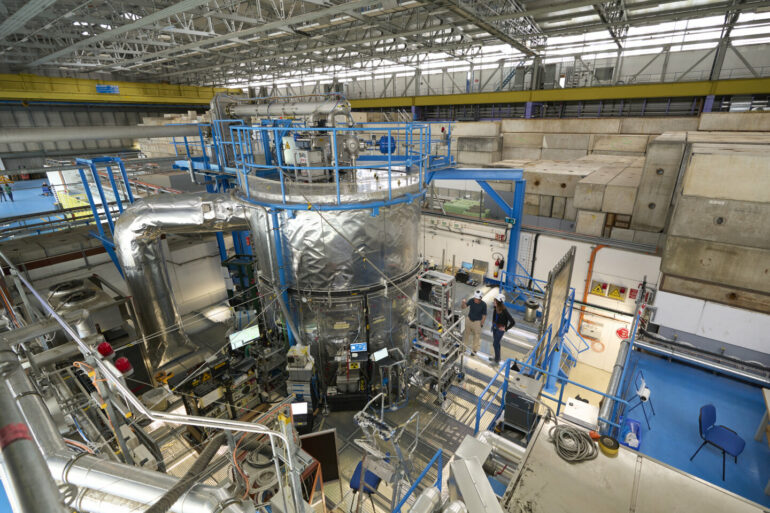Atmospheric aerosol particles exert a strong net cooling effect on the climate by making clouds brighter and more extensive, reflecting more sunlight back out to space. However, how aerosol particles form in the atmosphere remains poorly understood, especially in polar and marine regions.
Globally, the main vapor driving particle formation is thought to be sulfuric acid, stabilized by ammonia. However, since ammonia is frequently lacking in polar and marine regions, models generally underpredict aerosol particles in these regions.
A new study from the CLOUD collaboration now challenges this view, by showing that iodine oxoacids are acting synergistically with sulfuric acid to greatly enhance the particle formation rates.
The new findings, described in a paper published in the journal Science, build on earlier CLOUD studies that showed that iodine oxoacids rapidly form particles even in the complete absence of sulfuric acid. The results imply that climate models are substantially underestimating the formation rates of aerosol particles in marine and polar regions.
“Our results show that climate models need to include iodine oxoacids along with sulfuric acid and other vapors,” says CLOUD spokesperson Jasper Kirkby. “This is particularly important in polar regions, which are highly sensitive to small changes in aerosol particles and clouds. Here, aerosol particles actually provide a warming effect by absorbing infrared radiation otherwise lost to space and re-radiating it back down to the surface.”
The CLOUD experiment is studying how aerosol particles form and grow from mixtures of vapors at atmospheric conditions in a large chamber. It differs from previous experiments both by maintaining ultra-low contaminants and by its precise control of all experimental parameters at conditions found in the real atmosphere. This includes the use of a CERN particle beam to simulate ions formed by galactic cosmic rays at any altitude in the troposphere.
The new CLOUD results show that iodine oxoacids greatly boost the formation rate of sulfuric acid particles. At iodine oxoacid concentrations that are typical of marine and polar regions—between 0.1 and 5 relative to those of sulfuric acid—the CLOUD measurements show that the formation rate of sulfuric acid particles is increased by 10- to 10 000-fold compared with previous estimates.
The CLOUD team found that this increase is due to two effects: first, iodous acid substitutes for ammonia to stabilize newly formed sulfuric acid particles against evaporation and, second, iodic acid facilitates the formation of charged sulfuric acid clusters. Using quantum chemistry, the collaboration has confirmed the synergy between iodine oxoacids and sulfuric acid, and calculated particle formation rates that closely agree with the CLOUD measurements.
“Global marine iodine emissions have tripled in the past 70 years due to thinning sea ice and rising ozone concentrations, and this trend is likely to continue,” says Kirkby.
“The resultant increase of marine aerosol particles and clouds, suggested by our findings, will have created a positive feedback that accelerates the loss of sea ice in polar regions, while simultaneously introducing a cooling effect at lower latitudes. The next generation of climate models will need to take iodine vapors into account.”
More information:
Xu-Cheng He et al, Iodine oxoacids enhance nucleation of sulfuric acid particles in the atmosphere, Science (2023). DOI: 10.1126/science.adh2526
Citation:
CLOUD collaboration challenges current understanding of aerosol particle formation in polar and marine regions (2023, December 15)



